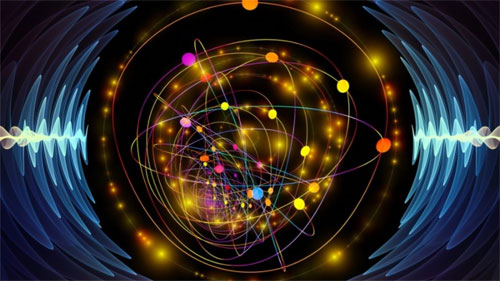Scientists have found evidence a strange group of quantum particles are basically immortal
Nothing lasts forever. Humans, planets, stars, galaxies, maybe even the Universe itself, everything has an expiration date. But things in the quantum realm don’t always follow the rules. Now, scientists have found that quasiparticles in quantum systems could be effectively immortal.

That doesn’t mean they don’t decay, which is reassuring. But once these quasiparticles have decayed, they are able to reorganise themselves back into existence, possibly ad infinitum.
This seemingly flies right in the face of the second law of thermodynamics, which asserts that entropy in an isolated system can only move in an increasing direction: things can only break down, not build back up again.
Of course, quantum physics can get weird with the rules; but even quantum scientists didn’t know quasiparticles were weird in this particular manner.
“Until now, the assumption was that quasiparticles in interacting quantum systems decay after a certain time,” said physicist Frank Pollman of the Technical University of Munich.
“We now know that the opposite is the case: strong interactions can even stop decay entirely.”
Quasiparticles aren’t particles the way we typically think of them, like electrons and quarks. Rather, they’re the disturbances or excitations in a solid caused by electrical or magnetic forces that, collectively, behave like particles.
Phonons – the discrete units of vibrational energy that oscillate the atoms in a crystal lattice, for example – are often classified as quasiparticles, as are polarons, electrons trapped in a lattice surrounded by a cloud of polarisation.
The researchers involved with this latest study developed numerical methods for calculating the complex interactions of these quasiparticles, and ran simulations on a powerful computer to observe how they decay.
“The result of the elaborate simulation: admittedly, quasiparticles do decay, however new, identical particle entities emerge from the debris,” said physicist Ruben Verresen of the Technical University of Munich and the Max Planck Institute for the Physics of Complex Systems.
“If this decay proceeds very quickly, an inverse reaction will occur after a certain time and the debris will converge again. This process can recur endlessly and a sustained oscillation between decay and rebirth emerges.”
And, the physicists pointed out, it doesn’t violate the second law of thermodynamics after all. That’s because the oscillation is a wave that is transformed into matter, which is covered under the quantum mechanical concept of wave-particle duality.
Their entropy is not decreasing, but remaining constant. That’s still pretty weird, but not physics-breaking weird.
In fact, the finding has solved a couple of other head-scratchers. For example, there’s a magnetic compound Ba3CoSb2O9 used in experiments that’s been previously found to be unexpectedly stable. Now it looks like the key might be the magnetic quasiparticles it contains, called magnons. According to the simulation, they rearrange themselves after decay.
Another potential example is helium: it becomes a resistance-free superfluid at a temperature of absolute zero, and this peculiar property could be explained by the fact this gas is full of quasiparticles called rotons.
At the moment, the work is only in the theoretical realm, but the researchers believe this quasiparticle immortality imbues it with strong potential for long-lasting data storage in quantum computing systems.
yogaesoteric
October 18, 2019
